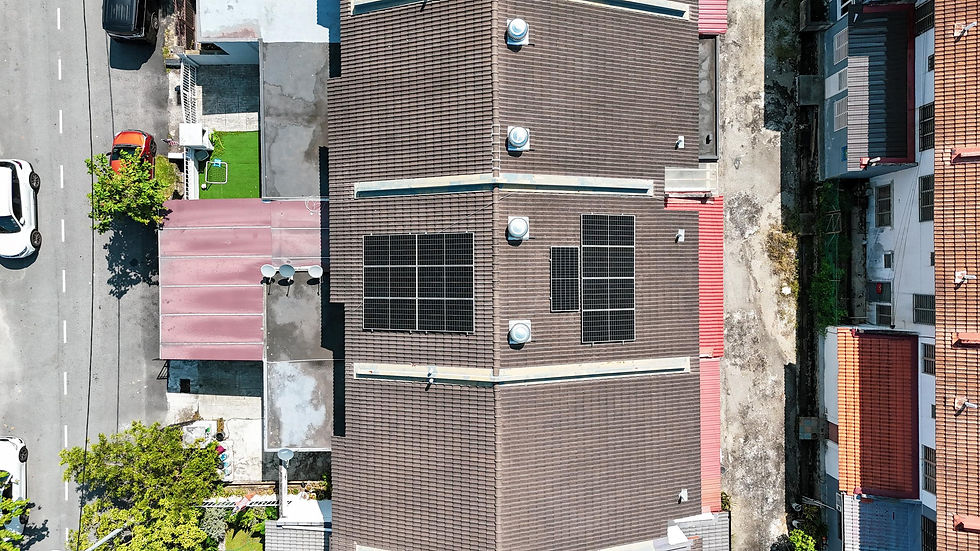TNB’s Recent Tariff Change and Introduction of Time-of-Use (ToU) – What You Need to Know
- suncatchermy

- 7 days ago
- 3 min read

TL;DR
The 5-tier domestic tariff (Tariff A) is now replaced with a 2-tier standard tariff — below 1,500 kWh and above 1,500 kWh — determined at the end of each monthly billing period.
TNB has introduced an Automatic Fuel Adjustment (AFA), which fluctuates based on fuel prices.
ToU (Time-of-Use) divides electricity rates into two time zones — Peak and Off-Peak — with Peak rates (2 pm – 10 pm, weekdays) being higher.
Not everyone should switch to the ToU scheme — read on to see if it benefits you.
Why the Change?
Effective 1 July 2025, TNB implemented tariff changes to encourage Malaysians to shift electricity usage habits towards a more sustainable and energy-efficient lifestyle. As consumers, we now have greater control over how and when we use electricity — and how much we spend.
Who Benefits?
Informed, energy-conscious users will have more transparency in how bills are calculated, more control over usage, and eligibility for Energy Efficiency (EE) incentives.
Low-consumption households will benefit from lower rates.

Key TNB Tariff Changes
Shift from activity-based tariffs to voltage-based tariffs.
Domestic Tariff A now uses 2-tier pricing instead of 5 tiers:
Below 1,500 kWh/month
Above 1,500 kWh/month
Introduction of Time-of-Use (ToU).
Introduction of Automatic Fuel Adjustment (AFA) — updated monthly based on fuel prices, meaning your bill may fluctuate.
What is ToU?
Time-of-Use gives customers flexibility to shift electricity consumption to Off-Peak hours, when rates are lower — potentially reducing bills.
ToU Time Zones:
Peak: 2 pm – 10 pm, Monday to Friday.
Off-Peak: All other hours, plus weekends and public holidays.
The goal is to move energy usage away from Peak times, reducing strain on the national grid.
💡 Tip: Run high-consumption appliances (washing machines, water heaters, air conditioners, EV chargers) during Off-Peak hours — weekends, public holidays, or weekdays before 2 pm and after 10 pm.
Monthly Usage | Standard Rate | ToU Off-Peak Rate | ToU Peak Rate |
Below 1,500 kWh | 27.03 sen/kWh | 24.43 sen/kWh | 28.52 sen/kWh |
Above 1,500 kWh | 37.03 sen/kWh | 34.43 sen/kWh | 38.52 sen/kWh |

Who Should Apply for ToU?
ToU works best for Domestic and Non-Domestic consumers who can shift their electricity use to Off-Peak hours.
If your household regularly runs energy-hungry appliances during Off-Peak periods, you’re likely to save. But if your schedule doesn’t allow shifting, the benefits may be minimal.
If You Have Solar (Suncatcher Customers)
First, a quick recap: Net Energy Metering (NEM) is a 10-year TNB contract allowing you to sell excess solar power back to the grid. You use your generated solar energy first, and any excess is exported at rates based on the time of export — making ToU relevant.
Potential Solar + ToU Benefits:
Weekday Peak (2–6 pm): Use your own solar power instead of paying Peak rates. If you’re not using electricity, export at higher Peak rates.
Off-Peak: Still benefit from self-consumption, but excess exports earn less (24.43 sen/kWh) compared to the standard non-ToU rate (27.03 sen/kWh).
Because usage patterns vary, there’s no one-size-fits-all recommendation.
Weekdays:
Minimal daytime usage → Stay on Standard tariff.
High pre-2 pm usage → Possible gains from higher Peak export rates (2–6 pm).
High post-2 pm usage → You may export at a lower rate compared to Standard.
Weekends / Public Holidays:
High daytime usage → Minimal difference between Standard and ToU.
Low daytime usage → You’ll export at a lower rate under ToU.
How to Apply for ToU
Visit TNB’s ToU Guide.
Fees:
One-time RM 10 stamp duty fee.
Monthly RM 10 retail charge (waived if usage ≤ 600 kWh).
AFA charges are waived if usage ≤ 600 kWh.

Should You Still Install Solar with Suncatcher?
Yes — when designed and sized properly, solar protects you from fuel price volatility and future tariff changes. By keeping monthly consumption below 1,500 kWh, you’ll enjoy lower import rates and rely less on TNB.
Final Thoughts
We hope this guide clarifies TNB’s recent changes and helps you decide whether ToU is right for you. For personalised advice on cutting your electricity bill long-term, contact us at +6010 2866 880.
Comentarios